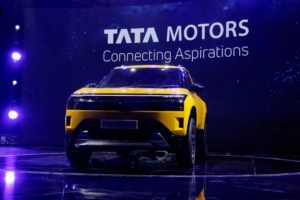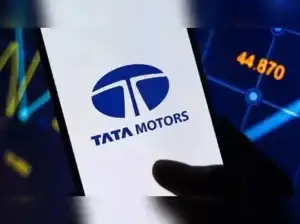Why Tata Motors Shares Are Dropping
Ground for Concern
On June sixteenth, two thousand twenty‑five, shares of Tata Motors dropped sharply—by as much as five percent—in early trading. The main reason is a cautious profit forecast from its luxury car division, Jaguar Land Rover (JLR). Investors, who had hoped for growing earnings, saw a much lower figure and reacted swiftly by selling shares.
JLR Cuts Its Profit Forecast
Jaguar Land Rover revised its expected operating profit margin—officially called EBIT margin—for the fiscal year ending in March two thousand twenty‑six. The new range is between five and seven percent, down from an earlier goal of ten percent. In fiscal year twenty‑twenty‑five, JLR managed an eight‑point‑five percent margin. This is a big drop. A lower margin means less profit from each car sold. Since JLR makes nearly seventy percent of Tata Motors’ total group revenue and about eighty percent of its profit, these lower forecasts weigh heavily on the entire company .
Free Cash Flow Falls to Nearly Zero
Another troubling sign was JLR’s warning that its free cash flow may almost disappear this year. In fiscal twenty‑twenty‑five, JLR generated about one point five billion pounds in free cash. Now, it projects that figure will drop to nearly zero. Free cash flow is the money a company has left after paying for operating costs and investments. When this figure goes to zero, it raises concerns about the ability to fund future development or pay back debts without borrowing.
Why the Forecast Fell
Three main reasons explain why the outlook was reduced:
- United States Tariffs: The U.S. imposed a twenty‑five percent tariff on imported vehicles, hitting JLR especially hard. The U.S. buys over one-quarter of JLR’s output. To avoid being over‑taxed, JLR briefly halted shipments and began seeking ways to reduce duties, such as shifting some production to the United Kingdom. Though a recent trade deal may let one hundred thousand U.K.-manufactured cars enter the U.S. at ten percent duty, the risk of more tariffs remains.
- High Investment in New Models and Electric Cars : JLR is investing heavily in electric vehicles (EVs) under its “Reimagine” strategy. This requires major spending on new EV platforms, batteries, and factory upgrades. While necessary for long-term growth, this spending pushes down short-term profits.
- Geopolitical and Market Pressures: JLR also faces other challenges: slower growth in Chinese sales, continued global semiconductor shortages, and higher costs for materials such as aluminum. These pressures added to the uncertain outlook.








